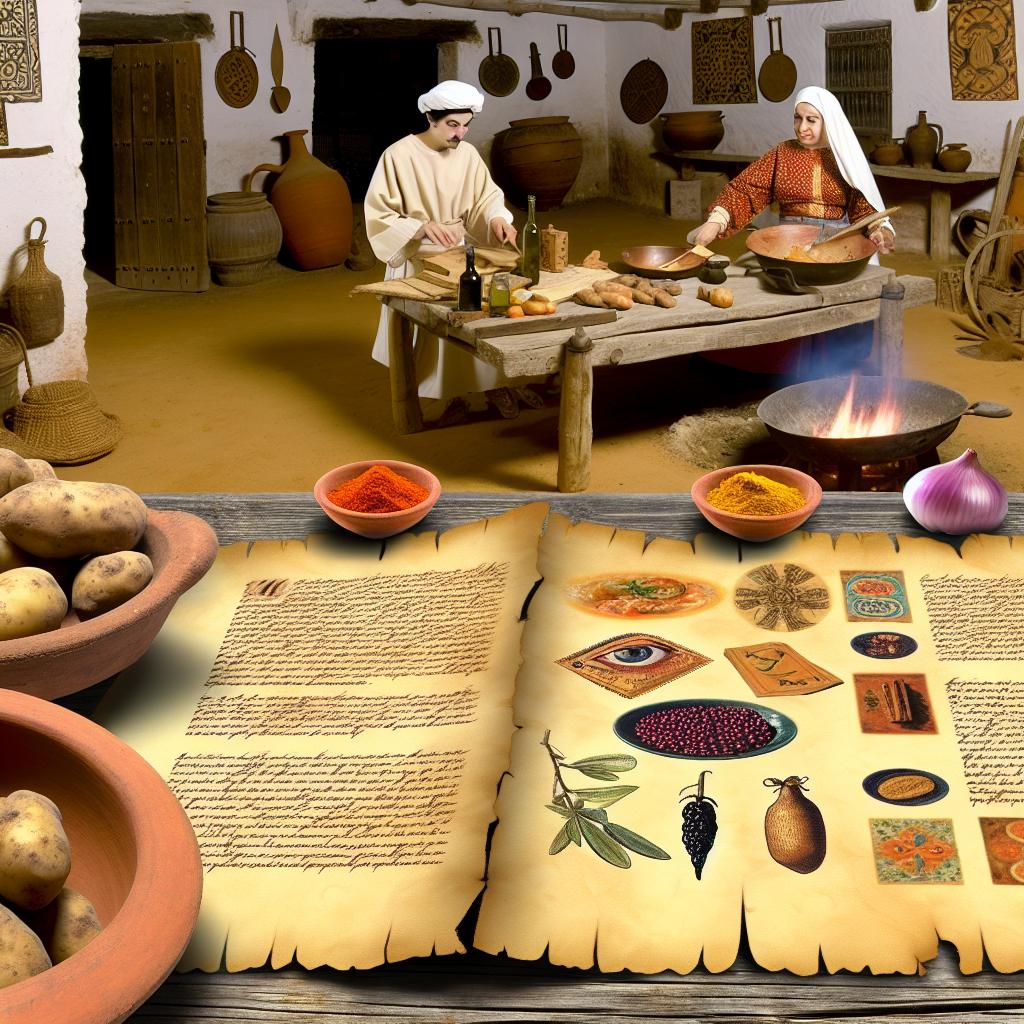
Spain, a vibrant tapestry of cultures and histories, presents a culinary landscape that extends far beyond the renowned paella and tapas. The diversity of Spanish cuisine is a reflection of its myriad influences and historical events that have shaped the nation over centuries. Within this diverse palate lie several rare and lesser-known Spanish dishes that offer a unique glimpse into the regional traditions and historical milestones that have defined Spanish gastronomy. These dishes, once integral to local communities, remain rich in flavor and steeped in history.
One of these lesser-known traditional dishes is the quintessential Sopa de Ajo, or garlic soup. This dish, characterized by its simplicity, originated from the resourcefulness of Spanish peasants. With limited ingredients at hand, they crafted a dish that was both utilitarian and delicious. A few ingredients like water, garlic, stale bread, and paprika form the foundation of this satisfying soup, which has lasted through generations in regions such as Castile and León.
The longstanding popularity of Sopa de Ajo can be traced back to Spain’s predominantly agrarian economy, where long-lasting ingredients were a necessity. Garlic, with its antimicrobial properties, was not only a staple in terms of flavor but also practical for preservation. The integration of stale bread allowed for the reduction of food waste, embodying an efficient use of resources. Today, Sopa de Ajo is not only a dish but a testament to the historical frugality and culinary ingenuity of past generations. Those interested in exploring the historical trajectory of Spanish cuisine can find an endless source of information through various food historians and culinary archives.
Another dish that reverberates with historical significance is Gachas. This culinary creation, emerging from the central parts of Spain, was a staple for rural laborers in the past. It consists of simple ingredients such as flour, water, and a medley of spices, often enhanced with the flavors of bacon or chorizo for added richness.
Gachas offers a window into the life and times of Spain’s agrarian workers. The dish underscores the resilience and industrious spirit of people who relied on these hearty meals for nourishment and energy during long working hours. Although its presence on contemporary menus is diminishing, Gachas thrives in regional food practices where preserving culinary tradition is paramount. Today, regional food festivals in Spain often become a stage for such culinary heritage, showcasing Gachas alongside other ancestral dishes, thus keeping their legacy alive.
The term Olla Podrida might not frequently appear in culinary explorations outside Spain; however, it holds a storied place within Spain’s culinary history. Originating from Burgos during the medieval era, this robust stew was a concoction of varied meats and legumes, lending it a richly nourishing profile. Its rather intriguing name, translating to “rotten pot,” is believed to be a playful reference to the mixture of various ingredients it incorporates, akin to a culinary potpourri.
Historically, Olla Podrida was a dish indicating opulence, served during grand feasts and celebrations. It marked a departure from its rustic origins, becoming emblematic of celebration and abundance. In modern times, it offers a captivating glance at feasts and festivities from a bygone era. Collections of historical cookbooks and exhibitions on medieval culinary practices provide a deeper understanding of the elaborate role Olla Podrida played through the centuries. Attending such cultural events or researching through culinary history compilations can provide further insights into its enduring legacy.
Lastly, the rich melding of cultural influences is embodied in the Cazuela de Arroz. This dish, often prepared with a blend of seafood or meats, owes its character to Moorish influences in Spanish culinary practices. The use of spices such as saffron speaks to the rich cultural exchanges that took place in Spain over the centuries. The preparation of Cazuela de Arroz in traditional earthenware pots amplifies the interplay of flavors, offering a sensory journey through Spain’s cultural history.
Today, Cazuela de Arroz stands as a monument to the cultural synergies that define Spanish culinary tradition. In coastal regions of Spain, this dish continues to be celebrated, particularly during cultural festivals and local gatherings. By preserving its authentic preparation methods and flavors, such gatherings help maintain the cultural memory and culinary depth that Cazuela de Arroz represents. For those keen on experiencing its authentic flavors, attending these local events or visiting traditional coastal eateries could offer an enchanting voyage into Spain’s multifaceted culinary world.
In summary, these rare Spanish dishes encapsulate stories of hardships, resilience, and cross-cultural interactions, rendering them integral to Spain’s extensive culinary heritage. Each dish, while varied in its origins and ingredients, shares a common thread of representing the socio-cultural evolution of distinct regions in Spain. Diving into the history of these dishes not only enriches our appreciation of Spanish cuisine but further underscores the layers of history and interaction encapsulated in every bite. While they may not bask in the global limelight like more mainstream dishes, these culinary gems continue to narrate the past and present cultural narratives through their sumptuous flavors and enduring traditions.